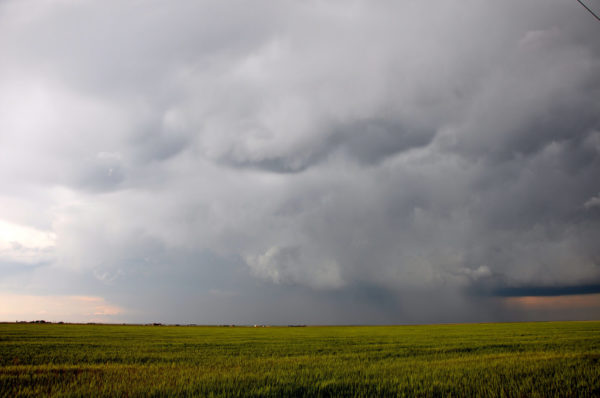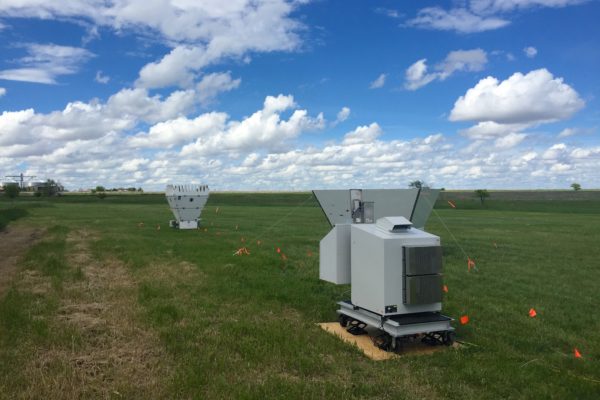New AERI research at CIMSS to support operational weather forecasters

Credit: NOAA, National Severe Storms Laboratory.
The National Oceanic and Atmospheric Administration (NOAA), through its Joint Technology Transfer Program, recently announced $6 million in grants that promise to speed the transition of technological advances to National Weather Service (NWS) day-to-day operations.
CIMSS scientist Tim Wagner’s proposed research to improve numerical weather prediction model forecasts by incorporating ground-based temperature and moisture profile data from SSEC’s Atmospheric Emitted Radiance Interferometer (AERI) was one of several selected for the program.
According to Wagner, SSEC scientists have conducted research using the AERI for years, demonstrating that comparing precise AERI observations to model output could support the needs of operational weather forecasters.
“We can monitor the evolution of the atmospheric boundary layer and see how stability is changing over time,” says Wagner.
“But what we haven’t done, up to this point,” explains Wagner, “is see what happens if we actually take those observations and put them into the forecast models—would that improve the accuracy of the models? We think it will. And so, that’s what this project is focusing on.”
Currently, the standard for collecting atmospheric temperature and moisture information is with weather balloons, but they are launched only twice a day, at scattered locations, and do not measure small-scale changes in the atmosphere that are necessary for accurate, location-based forecasts. Continuous measurements from a ground-based instrument such as AERI, however, could.
Wagner hypothesizes that assimilating precise AERI observations from the boundary layer into computer models will provide a much better picture of low-level moisture changes. That additional information will allow the NWS to issue better forecasts about quantity and location of precipitation—information that could have a huge impact for aviation, agriculture, flooding, or anyone who relies on or needs water information.
Today, forecasters can accurately predict which days will be rainy, and, according to Wagner, “we can look at the total area to be affected. We’re not doing a bad job of forecasting precipitation for the general area. But when we drill down to individual locations, trying to pinpoint specific storms and their specific times, that’s where we’re not doing as well.”
To the farmer whose crops need rain, it doesn’t matter that a forecaster accurately predicted an inch of rain, when it happened ten miles to the east of his fields, adds Wagner. That farmer’s crops still need water.

An Atmospheric Emitted Radiance Interferometer (AERI) operating during the Plains Elevated Convection At Night (PECAN) field campaign in 2015. Credit: Jon Gero, SSEC.
Wagner has received funding for a two year study. During the first year, he and co-investigators Jason Otkin (CIMSS) and Thomas Jones (University of Oklahoma) will assimilate data from the 2015 Plains Elevated Convection at Night (PECAN) field experiment where a network of AERIs was distributed across the Great Plains. Numerous weather systems moved through the plains region during the six-week experiment, providing ready-made cases and observations that can be tested in models.
In the second year, the researchers will take advantage of a network of AERIs that is being deployed across the Southern Great Plains as part of the Department of Energy’s Atmospheric Radiation Measurement (ARM) field measurement program.
“What we are going to do is assimilate those data in real time in the second year into an experimental weather model that will be run in the spring at the Hazardous Weather Testbed,” says Wagner.
NWS forecasters at the testbed will have the opportunity to evaluate the model. Their constructive feedback will help Wagner and his team improve it.
The turn-around time, from data collection to analysis to generating results, for the Joint Technology Transfer program, is very short.
However, the researchers are confident that the AERI—already proven to be of value for operational meteorology – will provide valuable data for assimilation, too, supporting the case for a much larger network of AERIs across the United States.
“We’ve been told that there are people in Congress who have their eyes on this program,” says Wagner. “They are looking for results and we are confident that we can deliver those results.”
by Jean Phillips
